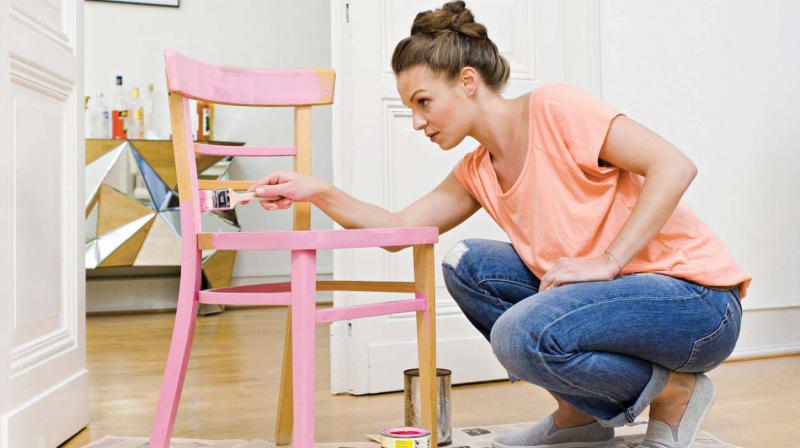In the seat of resting history

Klismos
The most ancient reference of the highly unusual klismos chair can probably be attributed to an appearance on painted pottery and bas-reliefs from the mid-fifth century Greece. It was depicted as a seating piece with arched legs that splayed out in a curve, and bore a concave backrest to contour the human body. Bearing a graceful and flowing appearance, this style of the chair was revived in the paintings of Jacques-Louis David, during the European Neoclassicism in the late 18th century.
The klismos is considered timeless, regal and enduring, and is distinguished by its light weight, thus combining functionality and practical design while retaining a classical appeal. A re-interpretation of the klismos surfaced in the early 20th century with the British decorator T.H. Robsjohn-Gibbings, who recreated a klismos chair after viewing remnants of the Greek artefacts that bore its depiction, infusing a stark and modern appeal into its design. Modern design may have layered the klismos with more distinctive decorative elements but it still remains iconic in its concept and shape.
Gondola Chair
These marvellous creations are carved into a curvilinear shape inspired by Venetian gondolas. Gondola chairs have a concave and arching back that slopes sharply similar to the prow of row boats. These chairs are combined with writing desks and are kept low in height. The seat can resemble a half cup with an open back, and the arm rest is not a separate element, but the facing edge of the curved seat itself. Gondola chairs can be designed with conical or circular backs and sometimes with rectangular ones too. Also called the tub chair or the barrel chair, the gondola chair style was earliest seen in France in the 18th century.
Chaise Longue
The origin of the chaise longue is believed to be a hybrid of a chair and day bed in ancient Egypt, modelled with palm sticks and raw hide. The Greeks used it to lounge during their merriment ritual of the symposion. Roman banquets saw an adaptation of it for reclining purposes during banquets. The literal translation of chaise longue is “long chair” or chaise lounge in English, with the French referring to it as chaise longue, pronounced “shayz long”.
Chaise longues have been omnipresent in French boudoirs and Victorian parlours and are uniquely synonymous with psychotherapist chambers. Their size and shape is dictated by their functionality which restricts the user to lounging, as the name suggests, and not sleeping.
It was during the French Rococo period that the chaise longue became a symbol of social status and was ornately sheathed with only the rarest and most expensive of materials.
Modern homes boast of the chaise longue as luxury furniture. It enhances home décor as a symbol of leisure and comfort, often upholstered in the finest plush fabric.
Chiavari
Named after the Italian city where they originated which is located between Genoa and the Cinque Terre, the Chiavari started appearing in the 19th century. The Descazi brothers carved the first Chiavarina in 1807 in the substantial cherrywood retaining its weightless yet elegant feel. The versatility of this chair carried it from the dining room to wedding settings and banquet rooms, wherein it became fashionable to seat guests on the Chiavari chair. It was popularised as the classic “wedding chair” after the Kennedys used 900 Chiavaris for their guest seating in 1953. This chair is lightweight and easy to move, mostly armless and come in a variety of designs and styles.
The Chiavarina design is presumably inspired by the Louis XV panel-back side chair minus the upholstery. Chiavari chairs have a distinctive appearance due to their spindles frame design. The top half of the back is modelled in a ladder-like fashion with short spindles inserted on the upper backrest. These are elegant and classical pieces which bear a delicate look but provide sturdy functionality. The Chiavari chairs are often called occasional or accent chairs as well.

